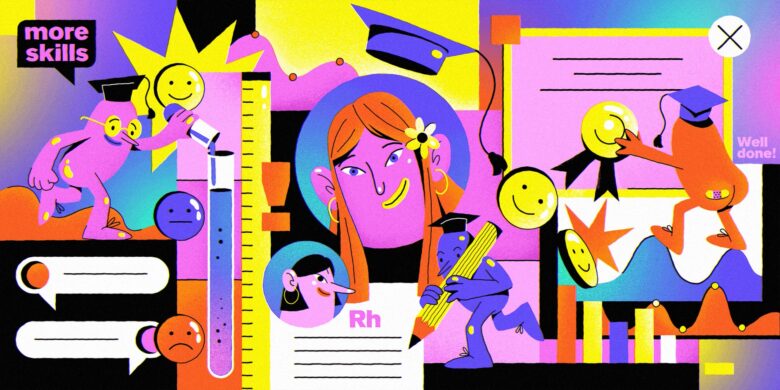The new world of data-driven HR is all about supporting people-first management with analytics. Gone are the days of using gut instincts and passing trends to manage a team and figure out how to justify decisions to the C-suite later.
HR teams today have more data than ever, and savvy leaders are learning to use analytics to improve their employee experience (EX). With data to back up staffing, retention, and promotion decisions, HR leaders can make critical changes to company culture and build policies that simultaneously benefit their employees and the bottom line.
Boost your team’s efficiency with Hubstaff's productivity tools
What is data-driven HR?
Data-driven HR is the process of HR departments using internal data and analytics tools to make workforce decisions. Some of these are straightforward, such as analyzing what benefits people use or sign up for to determine what you’ll offer next year.
Other data analysis can be more complex. You might monitor tasks across departments to see what tools people could be using that your company already pays for. Or you might identify meetings that should be emails, or change the size of some meetings to ensure all relevant people are included.
In the remote space, analytics can help you understand when people are on track and on task or if someone is struggling under the weight of their role.
Using data analysis to support decision-making
Using analytics to strengthen human resource management strategies and better manage teams is a game changer. With the rising call for people-first management, managers are learning to focus on their EX, not just their customer experience.
Employee satisfaction is a hard thing to pin down. What makes employees happy? How can leaders keep people motivated and engaged? These questions can answered and supported with accurate employee data.
Workforce management software is perfect for gathering essential data like time spent on projects or meetings, attendance, and industry-specific benchmarks. You need a platform that is strong enough to collect your data, manage it, and run reports that HR members can leverage. Also important are data security and governance policies that restrict who can access this information.
By leveraging the power of data, HR professionals like you can make better-informed decisions about your people strategy and growth plans. From burnout reduction and improved retention to more successful hiring and expansion, data makes it easy to understand what works and how to capitalize on it.
HR functions can be steadily improved when you leverage both current and historical data.
Shameless plug alert: Hubstaff Insights is our solution for sourcing real-time workplace data. We’d be remiss if we didn’t mention it. We’ve worked hard to build a tool to help teams use actionable Insights to design their best day at work.
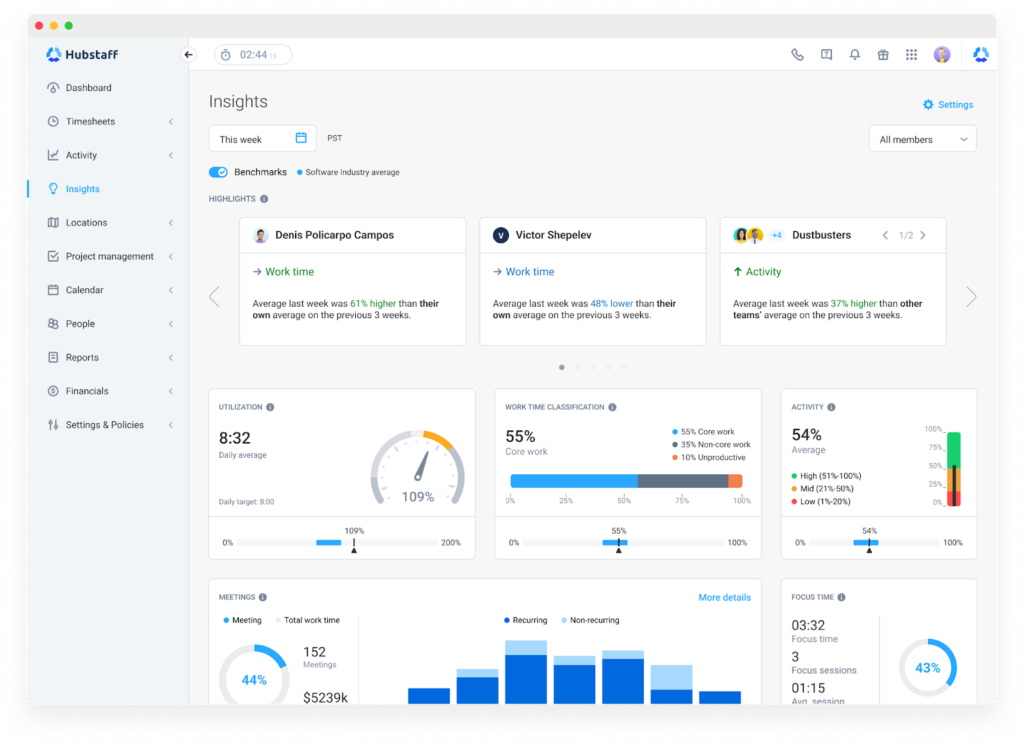
Data-informed leaders are better equipped to deal with the complexities of managing dispersed teams. Tools like Insights can help people gather, interpret, and deliver this information to the right people. Then, HR teams can decide how best to handle the data and what policies and standards work best for their team.
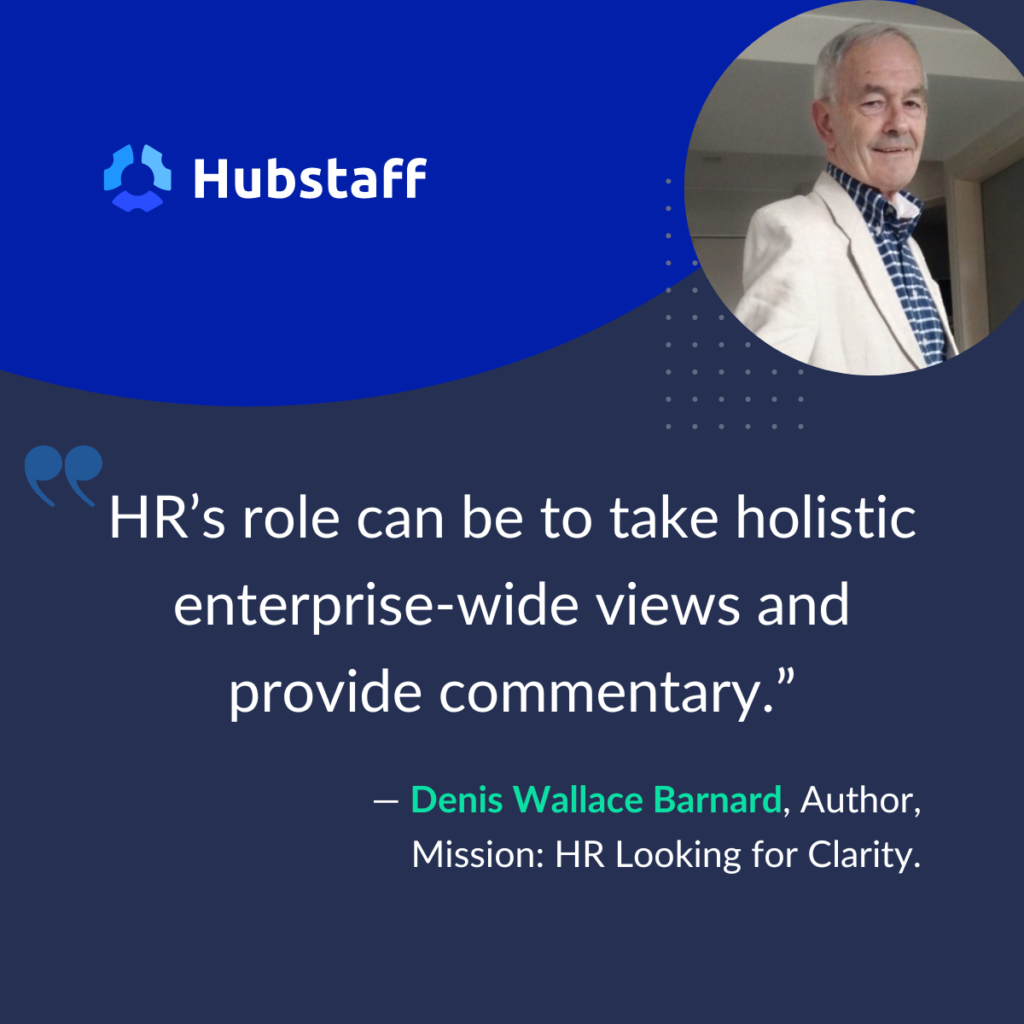
“HR’s role can be to take holistic enterprise-wide views and provide commentary,”
— Denis Wallace Barnard, Author, Mission: HR Looking for Clarity.
What does this new way of managing HR look like?
What does data-driven HR look like within an organization?
Here are some ways analytics can improve workforce management.
Emphasize the employee experience
Companies need to focus on the employee experience alongside the customer experience to build a successful business. Analytics make this more accessible by allowing leaders to measure and improve employee engagement using real-time data.
Training and onboarding focus
Using data, employers can improve their onboarding process and focus on training to improve employee retention and satisfaction. Use industry benchmarks and historical data to improve employee onboarding and ensure this is an ongoing process.
Prioritize proactive instead of reactive responses
With more data and predictive analytics, HR departments can be proactive with their policies rather than reacting to issues after they arise. With workforce analytics, managers can predict burnout and take steps to prevent it.
Take a digital-first approach
Data-driven decision-making starts with ditching pen-and-paper documentation and moving everything online. Integrating multiple systems lets HR teams utilize all available data covering employee policies and best practices.
Improve productivity by learning how your team works
Employee data can help leaders differentiate between focused and distracted work. Then, they can use these findings to clear roadblocks and help teams be more productive.
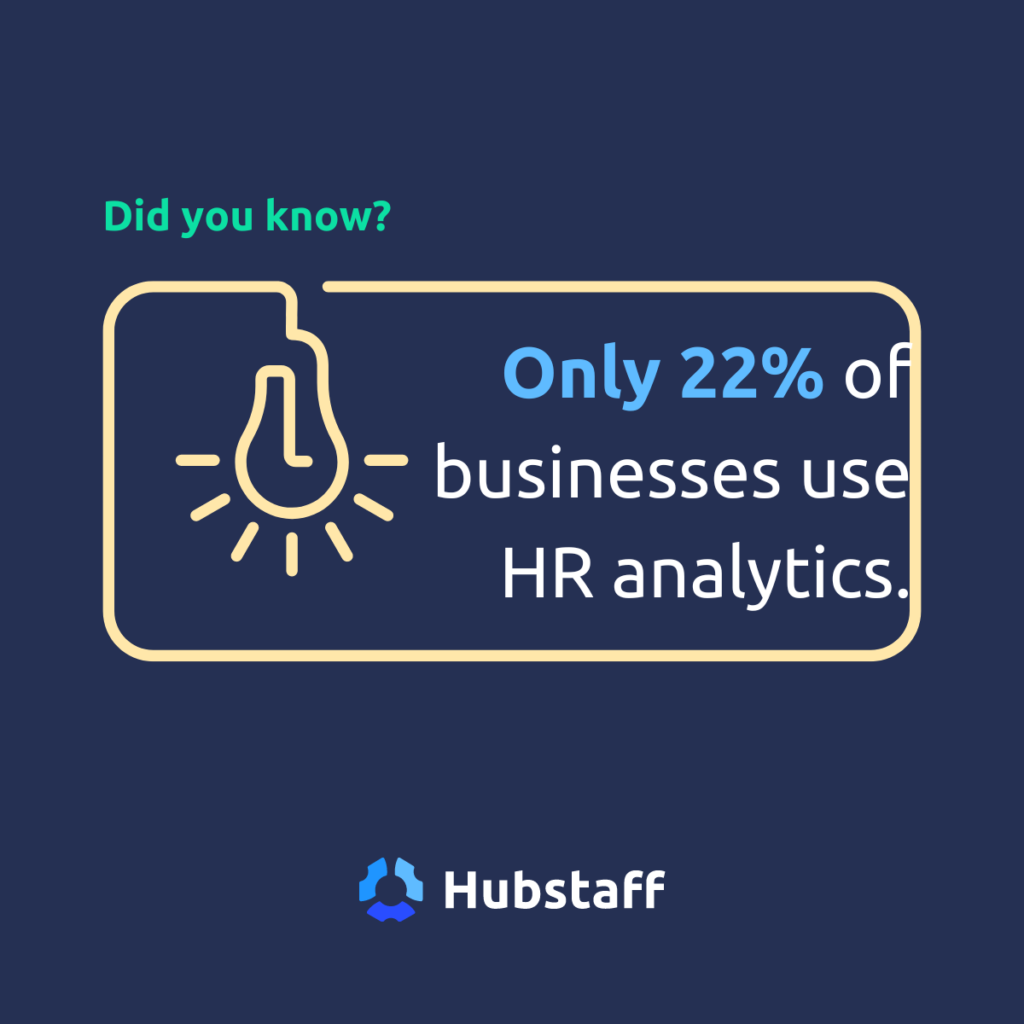
Navigating AI and analytics ethics in HR
HR analytics is including more AI tools as these models expand beyond text and image generation. While this can speed up report generation and analysis, HR must be careful about the application of AI models to people.
Professionals are responsible for the outcomes they achieve, which means a mistake in an AI tool is their mistake. The chance for bias or improper punishment is high when we let AI take the wheel. A healthy data-driven culture is one where tools strenghten positive outcomes for people, such as reduced employee attrition or adopting successful employee engagement programs.
So, data-driven HR must also be highly ethical HR. Here are a few core elements to consider as you adapt HR analytics tools.
Start with trust
HR needs to work with employees as well as managers to discuss how HR tools are used. Applying it honestly and ethically, and demonstrating this, creates a beneficial link between employees and their company. Being transparent about processes and giving people a chance to weigh in will go a long way to creating a positive relationship. Abusing data or using it to manage things like performance issues can quickly create mistrust.
HR initiatives should have clear internal policies around data collection, especially if you move into predictive HR analytics. That way your team can avoid harming employee relationships and trust. HR data analytics must be something that benefits employees and they’ll need proof beyond stats like improved employee engagement to see those gains.
Make privacy paramount
HR has access to a broad range of confidential information. Much of this cannot be used ethically in large data systems. Review legal requirements around employee privacy and proceed with caution. People have a right to privacy and may feel very uncomfortable if there is even an impression of impropriety around employee data.
Incorporate data protection policies in your work. HR processes should focus on areas you can make an impact without a significant shift in HR data access or utilziation. Strategic insights can still result in employee turnover, even among top talent, if they feel their privacy has been violated to create those gains.
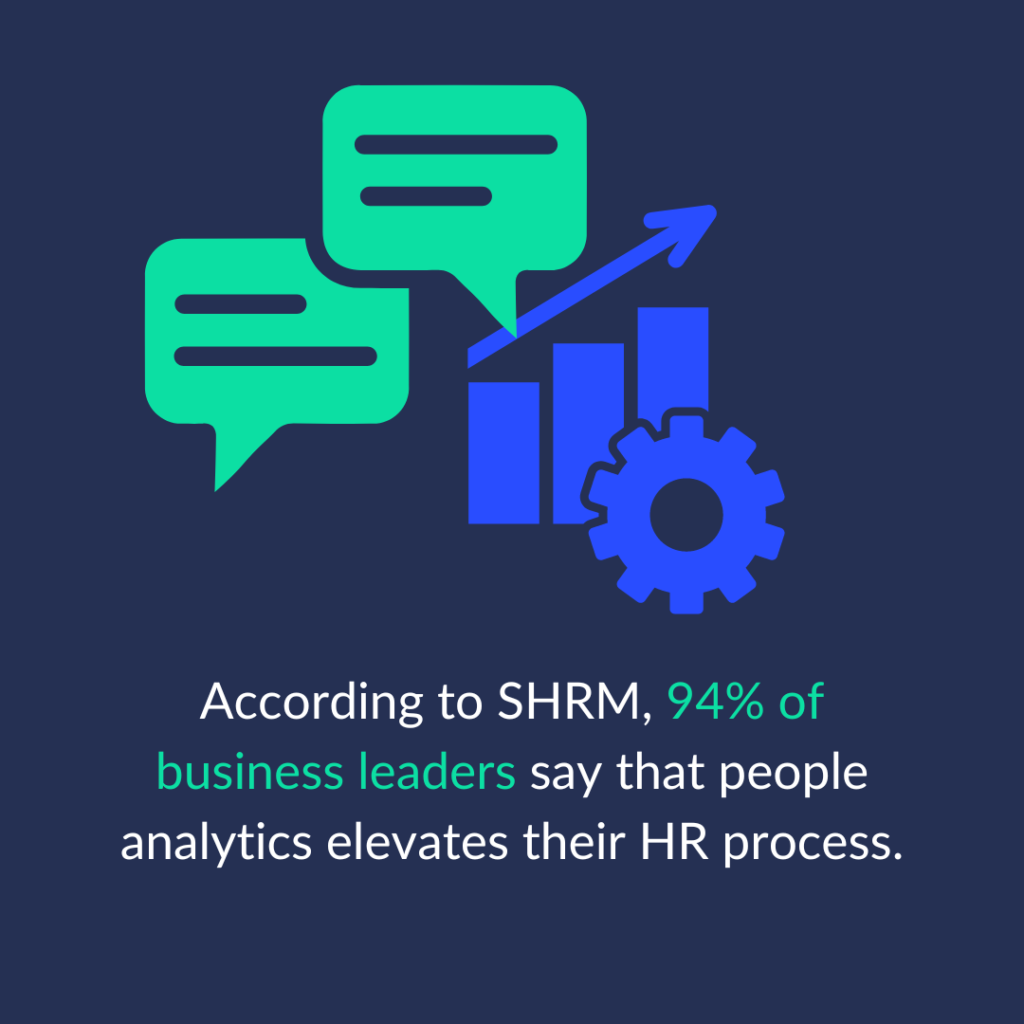
Maintain legal compliance
Outside of personal data access and use, there are other laws governing how HR can apply information and AI to their decisions. Work with your counsel or outside professionals before using it for personnel tasks. Hiring, PIPs, bonuses, promotions, and more all have potential areas of concern.
This area of concern is more than just worry about how you retain employees. Misuse of data can open you up to lawsuits and significant liability. Analytics skills should always be paired with legal expertise to prevent misuse when you apply HR data to craft plans or evaluate outcomes.
Review to eliminate discrimination
One of the biggest areas of legal and ethical concern is discrimination. AI models make mistakes and have biases that we might not always see at a glance. Instead of relying on these tools blindly, make your own assessments. Look for areas where AI or your analytics tools suggest something different from your conclusions. Research to see if you or the tool is demonstrating a bias or if it is overlooking and discriminating against certain groups.
Employee survey data is a good place to begin, as it can be anonymized fairly easily. Then, move to more complex data points and monitor for bias. You may even see areas of concern in your data collection. Keep this top of mind for any predictive analytics or actionable insights.
The future of HR
The new world of HR has a people-first mindset reinforced by reporting and analytics to improve EX. As technology evolves and grows, HR professionals must learn to embrace and use it to their advantage.
The future of this space will see the creation of a wealth of HR data for businesses large and small. What will set companies apart is how ethically and efficiently their HR professionals use employee data to improve company operations, employee engagement, employee satisfaction, workforce planning, and more.
You’ll soon be able to identify trends in moments, enabling a data-driven culture that goes beyond HR departments. Taking a data-driven approach to human resources is just the first step to identifying performance trends HR leaders and managers can leverage to create positive, scalable business outcomes.
The future of HR
The new world of HR has a people-first mindset reinforced by reporting and analytics to improve EX.
As technology evolves and grows, HR professionals must learn to embrace and use it to their advantage. We want to know, are you seeing any changes in how your HR team runs? How is the changing technology landscape impacting your work?
Most popular
The Fundamentals of Employee Goal Setting
Employee goal setting is crucial for reaching broader business goals, but a lot of us struggle to know where to start. American...
Data-Driven Productivity with Hubstaff Insights: Webinar Recap
In our recent webinar, the product team provided a deep overview of the Hubstaff Insights add-on, a powerful productivity measurem...
The Critical Role of Employee Monitoring and Workplace Security
Why do we need employee monitoring and workplace security? Companies had to adapt fast when the world shifted to remote work...
15 Ways to Use AI in the Workforce
Whether through AI-powered project management, strategic planning, or simply automating simple admin work, we’ve seen a dramatic...

